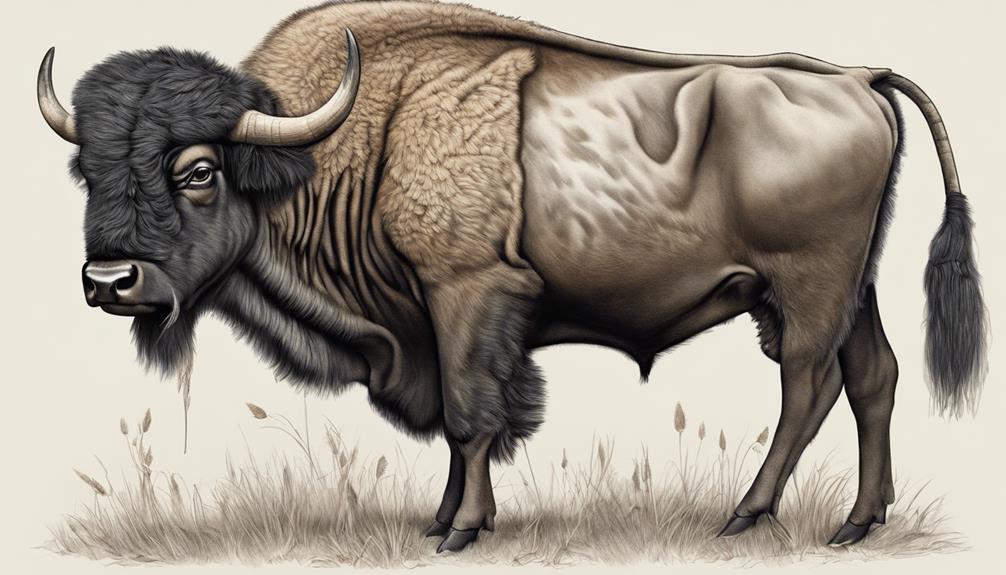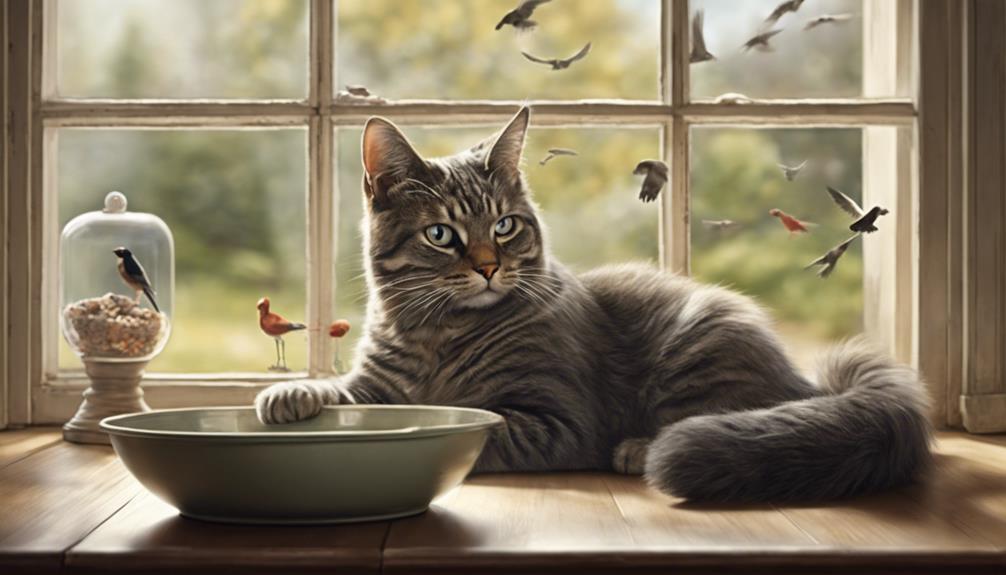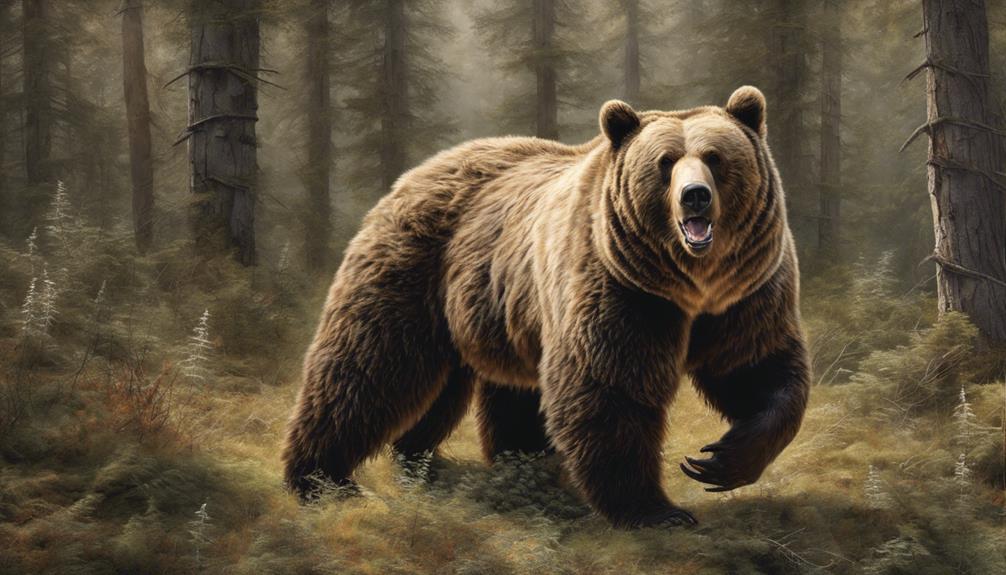When it comes to animals resembling cows, Bison, Yak, Water Buffalo, Wildebeest, and Muskox are fascinating to discover. Bison, known as the American buffalo, are the largest land mammals in North America, standing over 6 feet tall at the shoulder. Yak, found in the Himalayas, have unique features like shaggy coats and live in social herds. Water Buffalo, the Asian workhorse, are essential for various daily tasks and thrive in wet conditions. Wildebeest, African migrators, partake in annual migrations and benefit predators. Muskox, Arctic survivors with thick coats, show resilience in harsh environments. Each creature presents interesting facts to explore further.
Key Takeaways
- Bison: Resemble cows with a distinctive hump and large size, iconic to North America.
- Yak: Himalayan grazers similar to cows, resilient in high altitudes with shaggy coats.
- Water Buffalo: Asian workhorses akin to cows, domesticated for various tasks, thrive in wet conditions.
- Wildebeest: African migrators resembling cows, known for annual migrations and grazing habits.
- Muskox: Arctic survivors with woolly coats, forming herds for protection in extreme conditions.
Bison: The American Icon
Bison, known as the American buffalo, stand as iconic symbols of the American West. These majestic creatures, the largest land mammals in North America, possess a distinctive hump on their shoulders and massive heads. Weighing up to 2,000 pounds and towering over 6 feet tall at the shoulder, Bison are truly impressive animals that once roamed the plains in enormous herds.
In the 19th century, Bison faced near extinction due to overhunting and habitat loss. However, through conservation efforts, their numbers have slowly recovered. Today, Bison can be found in protected areas and national parks across the United States, where they continue to captivate visitors with their sheer size and beauty.
With their strong resemblance to cattle, Bison play a vital role in maintaining the ecosystem of the American West. Their grazing habits help shape the landscape and promote biodiversity, making them essential components of the region's natural heritage.
Yak: The Himalayan Grazers
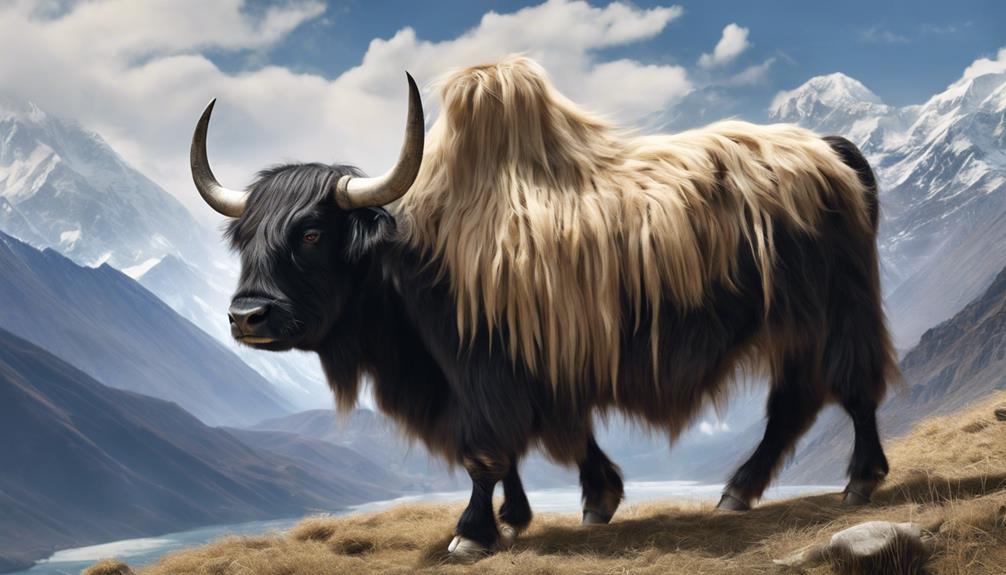
Nestled in the towering peaks of the Himalayas, yaks stand as resilient grazers known for their adaptability to high altitudes and harsh mountain environments. These domestic cattle, originating in the Himalayan region, are essential to local communities as sources of milk, meat, fiber, and even transportation.
Yaks boast unique physiological features, such as enlarged lungs and hearts, enabling them to thrive in the challenging mountain terrain. Their shaggy, insulating coats protect them from extreme cold, making them well-suited for the rugged conditions they inhabit. These hoofed animals are highly social, often forming herds that play an important role in the traditional lifestyle of Himalayan regions.
Renowned as beasts of burden, yaks have been integral to the livelihoods of those living in these high-altitude areas for generations. Their resilience and adaptability make them fascinating creatures to study in the context of their Himalayan habitat.
Water Buffalo: The Asian Workhorse
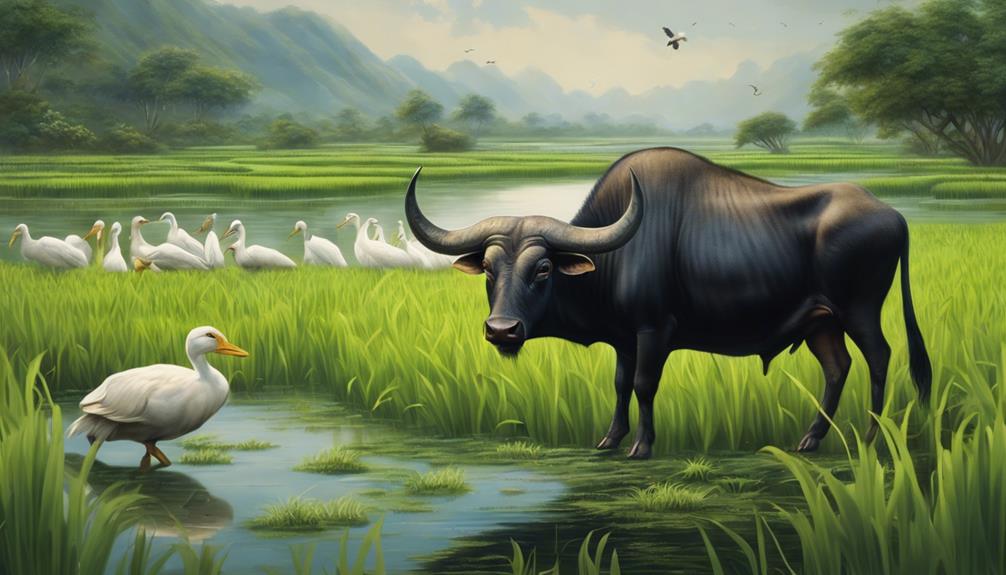
Water buffaloes, widely recognized as the Asian workhorses, play an essential role in various aspects of daily life across Asia. These powerful animals are vital for tasks ranging from plowing fields to transporting goods. Their remarkable strength and ability to thrive in wet conditions make them invaluable partners for farmers and laborers. Water buffaloes have been domesticated for thousands of years, becoming integral to the livelihoods of many communities. Their adaptability to hot and humid climates makes them well-suited for working in challenging environments like paddy fields and swamps. In addition to their labor contributions, water buffaloes provide milk, meat, and hides, serving as versatile assets for those who depend on them.
Interestingly, water buffaloes have also found their way to places like the United States, where they're raised for meat production. In regions like New York, these animals are valued for their meat quality and are raised to meet the demand for buffalo meat in the market.
Wildebeest: The African Migrators
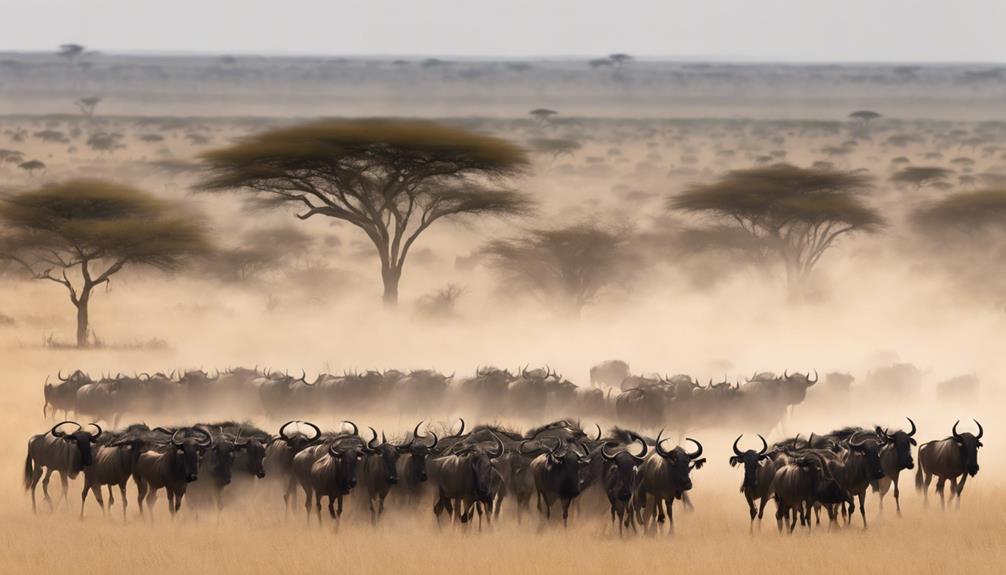
Having explored the significance of water buffaloes in Asian agriculture, the focus now shifts to the remarkable wildebeests of Africa and their iconic migratory patterns. Wildebeests, also known as gnus, are large antelopes found in central Africa. These majestic creatures are known for their annual migration, where millions of wildebeests, both males and females, travel long distances in search of greener pastures. One of the distinguishing features of wildebeests is a white stripe running down their sides, adding to their unique appearance. Standing tall at the shoulders, wildebeests have a large head, beard, and horns, making them easily recognizable in the wild.
Wildebeests play an important role in the ecosystem by grazing on grasslands, which helps shape the landscape and promote the growth of diverse plant species. Their migration also benefits predators like lions, hyenas, and crocodiles, who rely on the abundance of wildebeests for food. Witnessing the incredible sight of wildebeests on the move is a demonstration to the beauty and harmony of nature's cycles.
Muskox: The Arctic Survivors
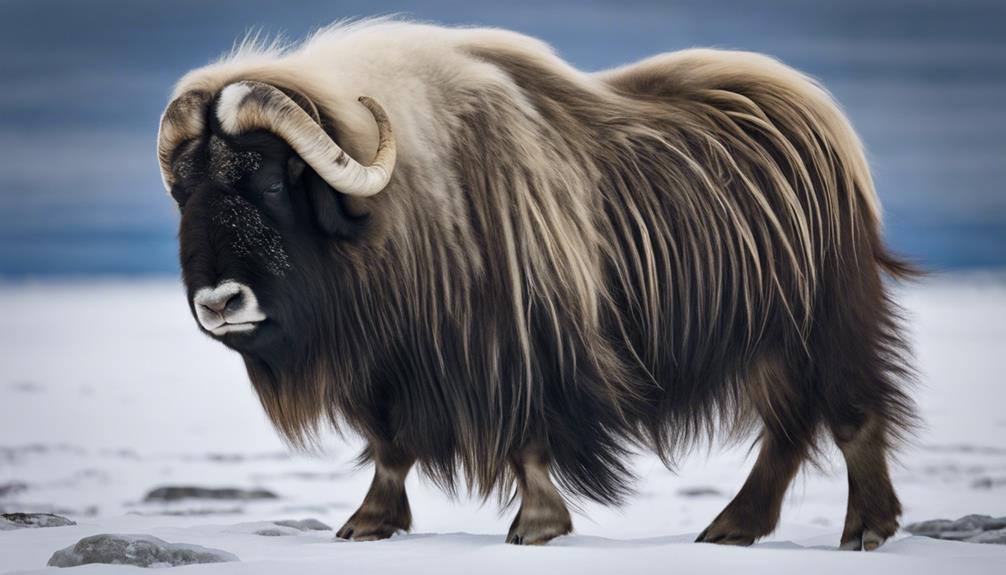
Surviving harsh Arctic climates, Muskoxen are large, shaggy mammals known for their thick coats and distinctive appearance. These resilient creatures, similar to cattle and Bison, have been thriving in the Arctic for thousands of years. Standing around 5 to 6 feet tall at the shoulder, Muskoxen are well-adapted to the frigid tundra environments they call home. Let's take a closer look at some fascinating facts about these Arctic survivors:
| Fact | Description | Importance |
|---|---|---|
| Thick Coats | Muskoxen have thick, woolly coats that provide insulation against the cold. | Essential for survival in freezing Arctic climates. |
| Social Herds | Muskoxen form tight-knit herds to protect each other from predators. | Strength in numbers for defense and social bonds. |
| Conservation Efforts | Muskox populations declined but have rebounded due to conservation initiatives. | Showcases resilience and importance of preservation. |
These remarkable creatures have not only adapted to extreme conditions but also showcase the power of conservation efforts in protecting vulnerable species.
Frequently Asked Questions
What Animals Are Similar to Cows?
Similar to cows, various animals share resemblances in body shape, size, and coloration. From antelopes like eland, bongo, greater kudu, sitatunga, to nyla, these creatures exhibit features that might evoke thoughts of cows.
What Dinosaur Is the Cow Ancestor?
Exploring the enigmatic past, I reveal the Eoceratops as the fascinating predecessor of cows. This plant-eating dinosaur from the late Cretaceous period shares unexpected similarities with our modern bovine companions.
What Is Closely Related to Cows?
Closely related to cows are bison, buffalos, and certain wild bovids in the Bovinae subfamily. These animals share common ancestry and physical features with cows, making them fascinating creatures to explore in the animal kingdom.
What Extinct Animal Was the Ancestor of Cattle?
The ancestor of cattle was the Aurochs, a majestic beast that roamed ancient lands. Extinct since 1627, these creatures were formidable in size and power, shaping the lineage of our domesticated companions.
Conclusion
So, there you have it – five fascinating creatures that resemble cows in various ways.
From the iconic bison to the majestic yak, each animal brings its own unique characteristics to the table.
Whether you're interested in learning about the diverse habitats they call home or the important roles they play in their ecosystems, these animals are definitely worth exploring further.
Keep your eyes peeled for these cow-like creatures in the wild and see if you can spot them for yourself!
